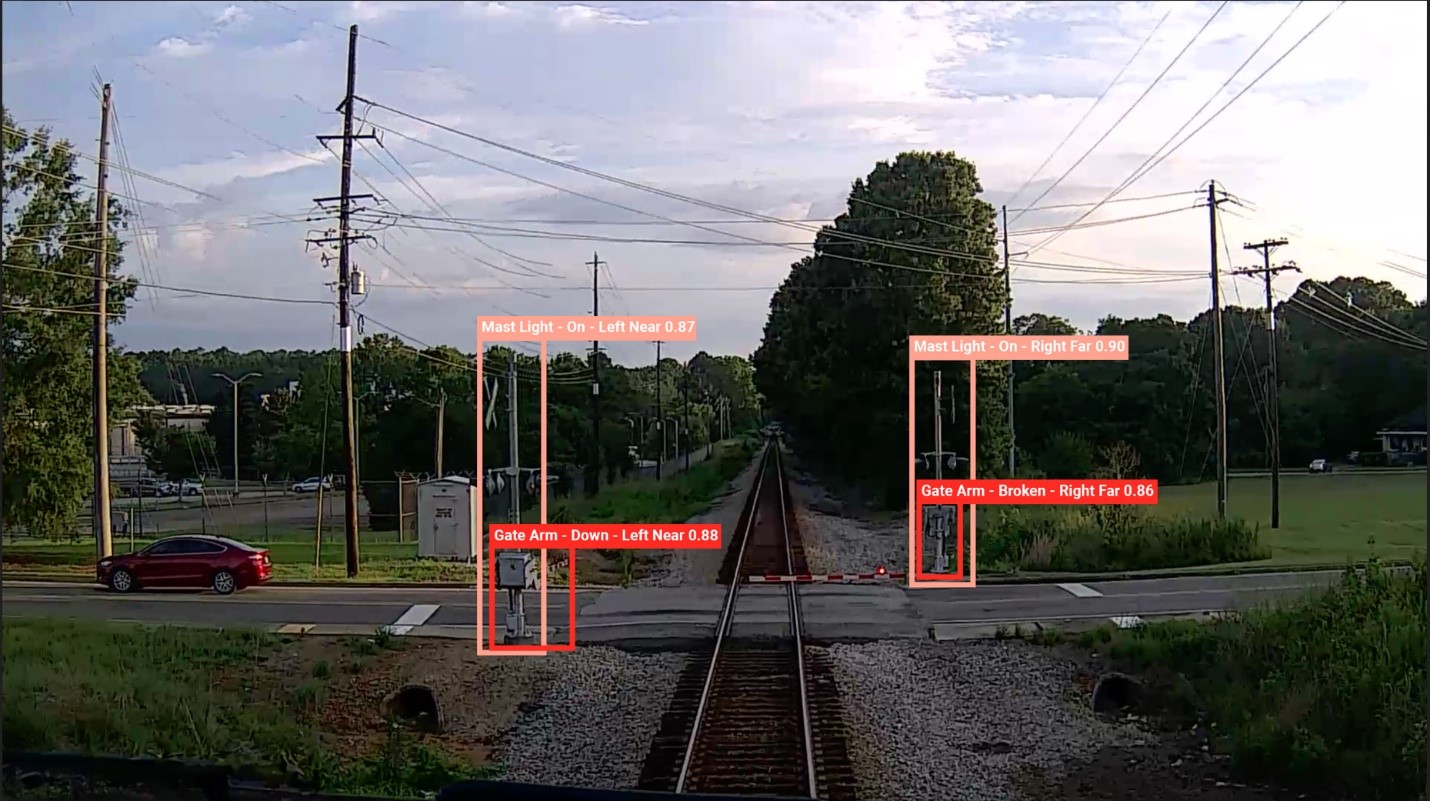Using AI-Powered Camera Technology to Improve Railroad Safety
Wi-Tronix's platform to address railroad crossing safety & trespassing danger featured in FRA Consolidated Rail Infrastructure and Safety Improvements (CRISI) Grant

THE CHALLENGE
Funding Agency: FRA
Small business: Wi-Tronix: https://www2.wi-tronix.com/
Project: Artificial Intelligence for Monitoring Crossing Infrastructure and to Improve Grade Crossing Safety
Principal Investigator: Adrian Pacurar
Location: Bolingbrook, Illinois
In many places around the United States, railroad tracks intersect local roads used by vehicles and pedestrians at grade, some in dense, inhabited communities. This can set the stage for deadly conflict with pedestrians and vehicles. Since trains are heavy, taking upwards of one mile to stop, the risk of deadly rail-related strikes is higher when people trespass onto the tracks.
With more than 200,000 grade crossings in the US --where railroad tracks directly cross roads-- understanding and preventing railroad crossing incidents and trespassing events is a major safety concern for both the Federal Railroad Administration (FRA) and the Federal Highway Administration (FHWA).
According to the FRA, more than 500 people die every year in railroad trespassing events. Brightline, a private Florida-based intercity passenger rail operator, has faced particularly high trespasser fatality rates, with 29 people killed in 2023 alone according to FRA data.
THE TECHNOLOGY

Wi-Tronix, a small business focusing on real-time rail safety data and analytics, received funding from the FRA through the U.S. Department of Transportation (DOT) Small Business Innovation Research (SBIR) program to develop automated technology for inspecting railroad crossing infrastructure using AI technology. According to FRA data, a little more than half of public highway-rail grade crossings in the U.S. feature “active” warning devices, such as automated gates or flashing lights. However, these devices currently undergo manual inspections, which are labor intensive and typically happen on a monthly basis. The Wi-Tronix solution performs automatic daily inspections, allowing for earlier detection of any issues. Wi-Tronix was able to leverage front-facing cameras already installed on many locomotives to gather video data of grade crossings. Wi-Tronix then used this video data to train AI models to recognize and classify whether railroad crossing features – like gates or flashers – are in working condition or have failed. This allows the AI system to alert authorized railroad users of problems with the crossing equipment that could lead to serious safety issues.
Now, Wi-Tronix has partnered with rail operator Brightline on a competitive CRISI grant from the FRA to detect and analyze pedestrian trespassing events. This will allow Brightline to identify which areas should be their first priorities for safety improvements. Ritu Chawla, Wi-Tronix’s Director of Artificial Intelligence, noted that railroads can combat trespassing by figuring out where they should apply “corrective actions” to reduce trespassing, such as providing additional education, engineering physical barriers including fencing, or applying greater enforcement.
To do that, currently railroads turn to “incident data”—that is, hotspots of serious injuries or deaths. But, Chawla says, “The rate of near misses to fatalities is 600 to 1,” a ratio drawn from researcher Frank Bird’s 1966 analysis of industrial accidents. It’s critical, Chawla says, to develop technology that can detect near-miss events to gather broader and more accurate information about where dangerous areas are located. Gathering near-miss data also allows railroads to make safety interventions proactively—without having to wait for fatalities to happen first.
Chawla shared that the trespasser detection technology the company is developing through the CRISI grant builds off the same data-gathering technology Wi-Tronix originally developed during their SBIR award. “What makes AI different is it requires extensive high-quality, relevant, and comprehensive datasets to train its model,” said Chawla. The key to solving both the SBIR challenge of detecting failed infrastructure and the CRISI challenge of detecting trespassing events is getting enough video data to train the AI system to accurately recognize these scenarios. Gathering data is particularly challenging for rare events like pedestrians trespassing in front of trains.
To solve this data-gathering problem, Wi-Tronix’s continuously improving onboard platform detects hundreds of locomotive signals in real-time, providing the ability to identify an abnormal event. By identifying these events, Wi-Tronix can standardize reporting of near-miss situations that risk not being manually reported by engineers due to stress, fatigue, or other emotional states. Once the AI system can accurately detect trespassing, Wi-Tronix customers can analyze which areas of the corridor have the most trespassing events so that they can prioritize installing fences or other interventions.
SBIR’S ROLE
Wi-Tronix is applying the specific technology they developed during their SBIR award, namely smart data collection and other AI enabled techniques as well as camera technology that can see farther ahead of the train. In addition to the technological advances, Chawla says that SBIR has played an important role in helping the small business navigate the world of rail transportation operations. “There’s more value than just funding. We got feedback through interactions with the experts to better understand the regulations and railroad operations,” she said.
THE FUTURE
Wi-Tronix is currently scaling up their SBIR research on grade crossings and will soon be able to inspect gate arms at around 8,000 crossings. Since Wi-Tronix’s SBIR research was piloted on 50 grade crossings, inspecting 8,000 crossings requires enhancements to enable AI predictions on much larger data load. Additionally, they are also re-training AI models to be able to recognize infrastructure elements in a wide variety of scenery and locations across the country. Wi-Tronix plans to use its active learning pipeline to maintain the model performance.
“With AI, we’re just getting started,” says Chawla. She says Wi-Tronix plans to continue build upon their platform and continue leveraging AI to enhance safety and increase productivity.
